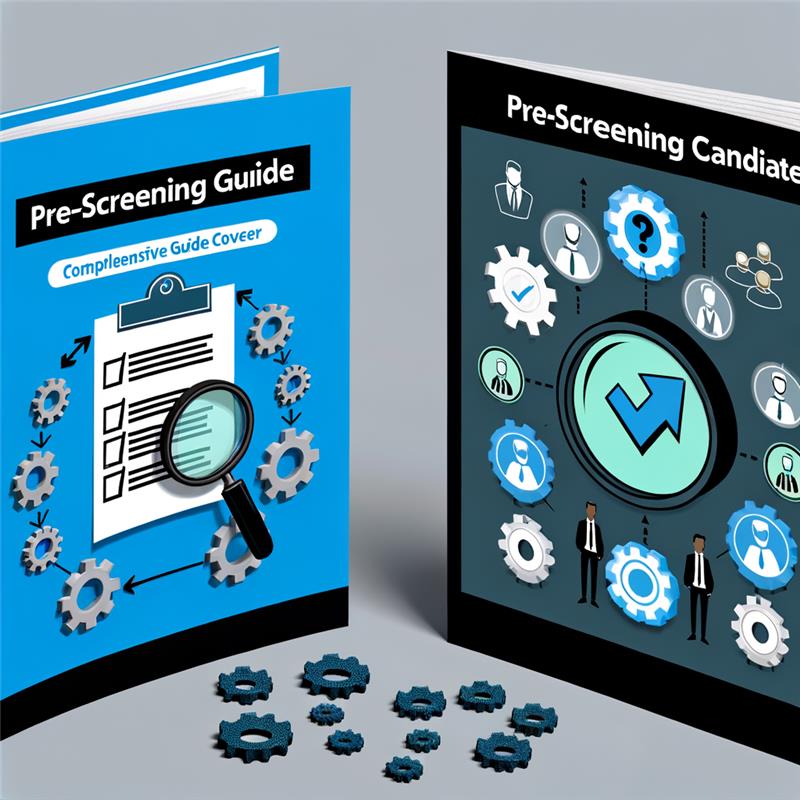Understand the Components of STAR method
- Situation: Set the scene and describe the environment.
- Task: Define the task, goal, or objective you aimed to achieve.
- Action: Detail the actions taken to achieve the task.
- Result: Share the results of your actions.
Prepare in a Detailed Way
- Research the Role: Understand the job description and the skills required.
- Identify Key Experiences: Highlight your strongest experiences relevant to the role.
Practice Regularly
- Rehearse Your Responses: Compile your strongest answers in the STAR format.
- Time Yourself: Aim to answer in a concise 1-2 minutes.
Use Relevant and Appropriate Examples
- Be Detailed: Focus on your specific contributions and the consequences of your actions.
- Quantify Achievements: Use numbers or percentages to emphasize your accomplishments.
Stay Authentic
- Be Honest: Share genuine experiences; avoid fabricating stories.
- Discuss Challenges: Acknowledge problems and conflicts; no one is perfect.
Listen Carefully
- Process the Question: Pay close attention to the interviewer’s questions.
- Ask for Clarification: Don’t hesitate to ask for clarification if needed.
Reflect and Improve
- Post-Interview Evaluation: Assess which aspects were successfully handled and which were lacking.
- Use Feedback: Implement recommendations for future performance improvement.
Maintain Confidence
- Practice Confidence: Approach the interview with a positive mindset.
- Stay Calm: Take deep breaths before and during the interview to stay composed.
What is the STAR Interview Method and When Should It Be Used?
The STAR Interview Method is a systematic way primarily employed in job assessments to gather information about how a candidate has behaved in the past. In this context, STAR is an acronym for Situation, Task, Action, and Result.
Who Should Apply the STAR Method?
- Structured Responses: Candidates are able to focus clearly on and respond to the query.
- Behavior: How candidates acted in real life.
- Uniform Assessment: Evaluation of all candidates in a similar manner.
STAGES OF THE STAR METHOD
Situation
- Provide context or the background of the situation in which the scenario is placed.
- Give details on the time and setting of the occurrence.
Task
- State the problem or task that you had to deal with.
- What was the purpose or target you were trying to achieve?
Action
- Provide details about methods you implemented in order to fulfill the task.
- Mention the particular actions and decisions made by yourself.
Result
- State what happened after the things you did.
- Make mention of any numbers (for instance, embarked on a 20% increase in sales).
Ways of Employing the STAR Method
- Prepare: Practice your answers to frequently asked interview questions in the ‘STAR’ format.
- Relevance: Support with demonstratives that suit the position applied for.
- Be Brief: The answer should be within a time span of between one to two minutes.
- Think: Post-interview, evaluate what went right and what went wrong.
How to Use the STAR Method in Interviews
Learn the Components of the STAR Method
- Situation: Provide background to your story.
- Task: Describe the challenge you need to face.
- Action: Note the steps that you personally undertook.
- Result: What happened as a result of the actions which you just described?
Prepare Your Examples
- Identify Situations: Ensure that you have examples appropriate to the job at hand.
- Consider a Range of Situations: Use several contexts—ask for and give directions, discuss problems and offer solutions, or give instructions.
Practice Your Responses
- Rehearse the STAR Approach: Find examples and put them in the STAR format.
- Time Yourself: Keep your answers brief (1-2 minutes) to maintain clarity.
Make Sure You Understand the Question
- Take Care: Ensure you know what the interviewer wants to know.
- Ask for Clarification: Don’t hesitate to ask for clarification if a question is unclear.
Provide Yourself with an Appropriate Answer
- For the Situation: Give the details briefly.
- For the Task: Describe what had to be accomplished.
- For the Action: What did you do in the task? What decisions were important?
- For the Results: Highlight the favorable effects and any figures.
Honesty is the Best Policy
- Be Authentic: Use true examples, not fabricated ones.
- Discuss Obstacles: It’s okay to mention difficulties; focus on what you learned.
Self-Evaluation
- Post-Interview Review: After the interview, evaluate what went well and what could be improved.
- Make Changes for Future Interviews: Analyze feedback to improve your responses for future interviews.
Examples of Situation, Task, Action, and Result (STAR Method)
Example 1: Team Project
Situation
- Participated in a group presentation in college with a very short submission time.
Task
- Took charge as the leader to ensure project completion on time.
Action
- Established regular meetings to monitor progress.
- Assigned roles according to each member’s capabilities.
- Created a work plan to avoid time wastage.
Result
- Finished the project two days ahead of the deadline.
- Received an ‘A’ and positive remarks from the professor.
Example 2: Customer Service
Situation
- Handled an angry customer in a retail shop.
Task
- Needed to resolve the issue and restore customer satisfaction.
Action
- Listened to the customer’s problems.
- Offered a replacement product and a discount on their next purchase.
- Followed up with a phone call.
Result
- Customer was satisfied and returned for additional purchases.
Example 3: Problem-Solving
Situation
- Experienced plummeting sales figures in a previous role.
Task
- Needed to determine the cause and implement a solution.
Action
- Conducted a market analysis to understand trends.
- Collaborated with the marketing team to develop a new advertisement.
- Trained staff on upselling skills.
Result
- Sales increased by 15% over three months.
- Received collective commendation for the effective turnaround.
Example 4: Leadership
Situation
- Organized volunteers for a community outreach program.
Task
- Responsible for logistics and overall coordination.
Action
- Developed a comprehensive program for the event.
- Secured volunteers and delegated responsibilities.
- Sourced local businesses for sponsorship.
Result
- The event was a success with over 500 attendees.
- Raised 130% of the targeted funds.
Example 5: Conflict Resolution
Situation
- Conflict arose between two team members that hampered work.
Task
- As project manager, needed to resolve the conflict.
Action
- Organized a mediation session to address concerns.
- Facilitated discussion and moderation among team members.
- Assisted in finding a compromise.
Result
- Restored team dynamics.
- Improved collaboration, leading to earlier project delivery.
STAR Method Tips on How to Do It Successfully
1. Get Ready
- Research the Role: Understand the job requirements and skills needed.
- Identify Key Experiences: Choose relevant examples that demonstrate your strengths.
2. Formulate Your Responses
- Use the STAR Method: Clearly define the Situation, Task, Action, and Result.
- Do Not Overload: Avoid including irrelevant information in your responses.
3. Schedule Certain Times for Practice
- Try Your Answers Out Loud: Practice speaking your answers with a friend or in front of a mirror.
- Abide by This Rule: Limit each response to one or two minutes.
4. Visibly Demonstrate the Right Examples
- Give Specifics: Clearly explain what you did and the impact of your actions.
- Give Figures: Use numbers or percentages to report accomplishments.
5. Don’t Pretend
- Be Candid: Share genuine experiences; avoid making up stories.
- Identify Problems: Discuss challenges faced and how you resolved them.
6. Attempt to Interpret
- Process the Question: Listen carefully to what the interviewer is asking.
- Ask for Clarification: If confused, don’t hesitate to ask for clarification.
7. Evaluate the Situation
- Assess How Your Interview Went: Reflect on what worked and what needs improvement.
- Continue to Improve: Use feedback to enhance your performance in future interviews.
Common Mistakes to Avoid in STAR Interview Method
1. Inadequate Preparation
- Failure to Conduct Research: Ignoring information about the job context and essential responsibilities of the position.
- No Suitable Examples: Lacking specific cases that illustrate your capabilities.
2. Inadequate Sequence
- Not Following STAR: Failing to provide clear Statements, Tasks, Actions, and Results.
- Adding Unnecessary Information: Including irrelevant details that distract from the main focus.
3. General/References
- Brevity in Details: Providing general responses without specific actions or outcomes.
- Not Utilizing Numbers: Making statements without using numbers or percentages to illustrate achievements.
4. Faking It
- Creating Narratives: Fabricating scenarios instead of sharing true experiences.
- No Mention of Adversity: Not discussing pressure situations and how you managed them.
5. Questions Comprehension
- Deficiencies in Auditory Comprehension: Failing to understand the interviewer’s requirements.
- Lack of Seeking Clarification: Not asking for clarification when confused by a question.
6. Effective Time Control
- Talking Continuously: Exceeding the recommended time limit of 1-2 minutes for responses.
- Speaking Too Fast: Rushing through answers and losing clarity.
7. Failing to Monitor Progress
- Inability to Review Performance: Not reflecting on what went well or what needed improvement after the interview.
- Disregarding Suggestions: Ignoring feedback that could enhance performance in future interviews.
Conclusion
The STAR Interview Method is a powerful tool that enables candidates to articulate their experiences effectively. Its key components—Situation, Task, Action, and Result—allow you to craft compelling responses that showcase your skills.
To maximize the impact of your interview, ensure thorough preparation, practice relevant examples, and tailor your approach to your audience. Emphasize authenticity, practice active listening, and reflect on your performance for continuous improvement.
Related: Top Behavioral Interview Questions
When the STAR technique is employed confidently, you are likely to leave a memorable impression on interviewers, increasing the chances they will want to connect with you again in the future.
The STAR Interview technique is beneficial to both the candidates and the interviewers. This method assists any job seeker in selling his/her relevant skills and experience while the interviewers are able to make the right hiring decision.




